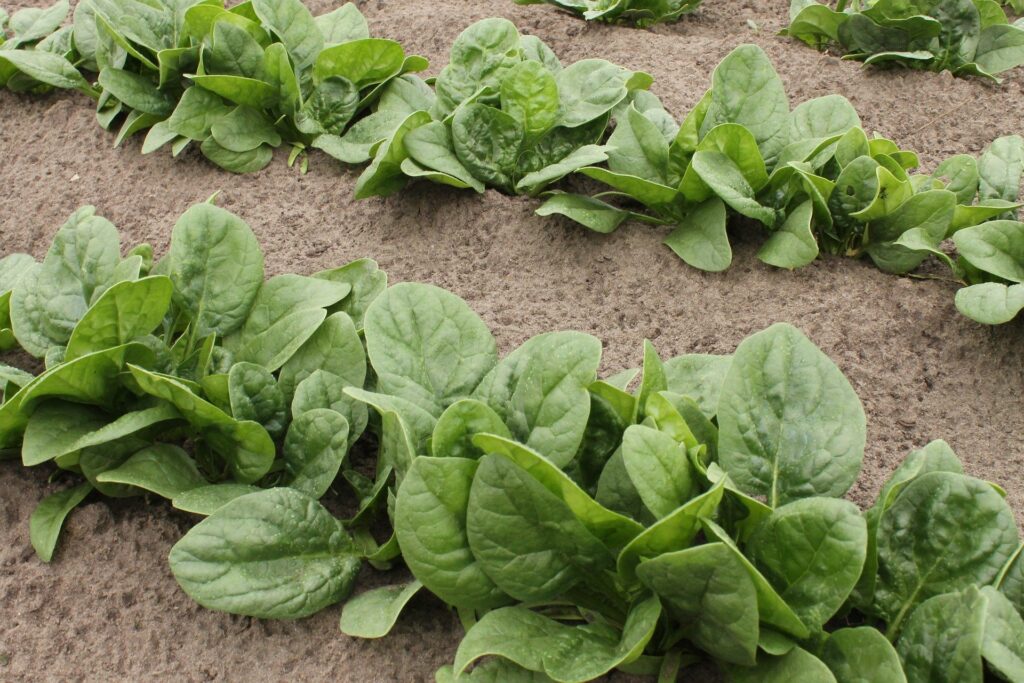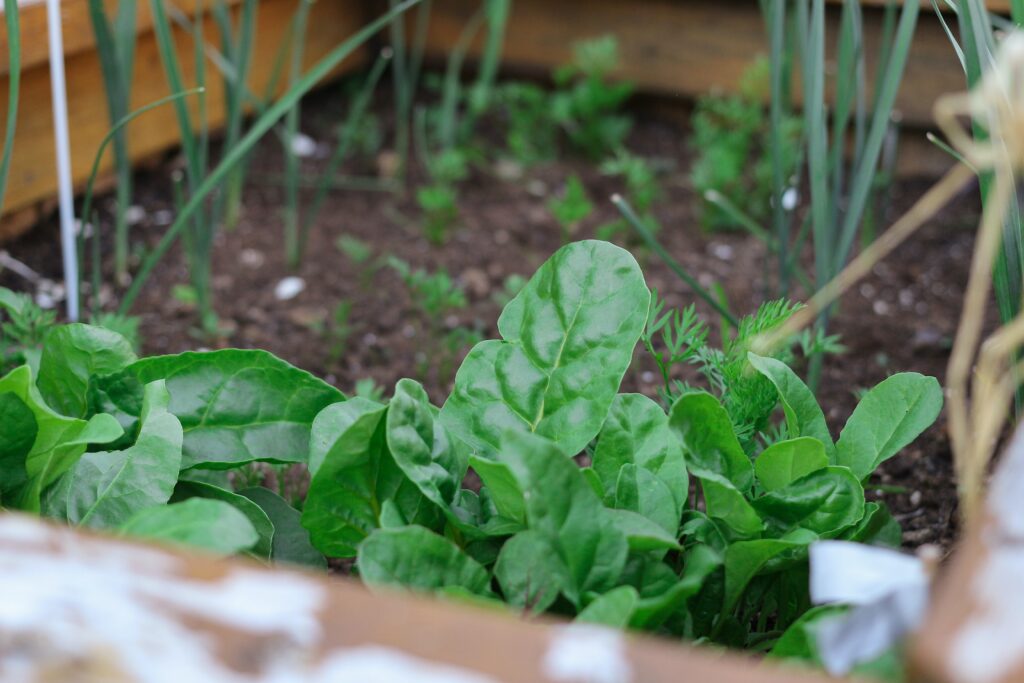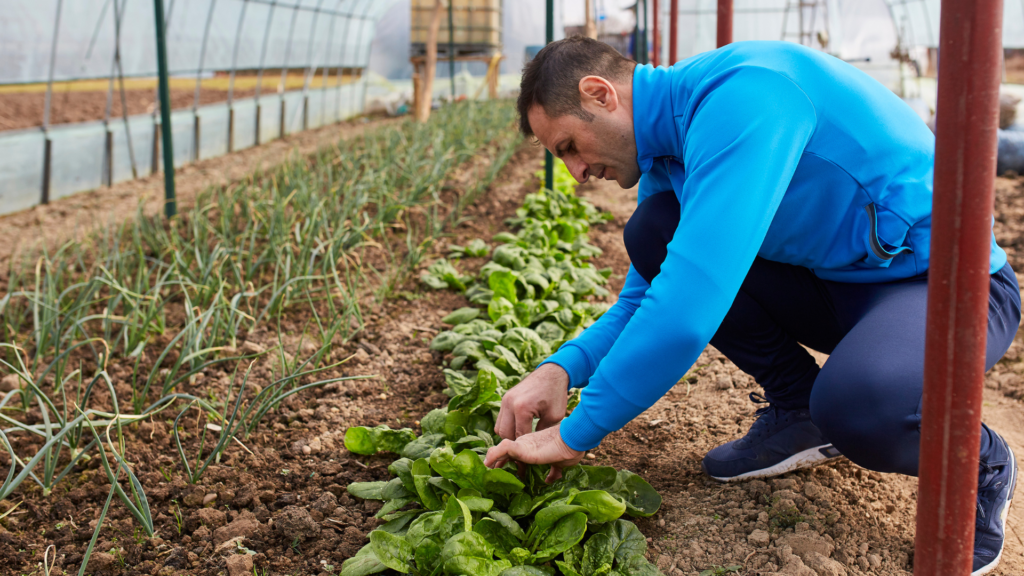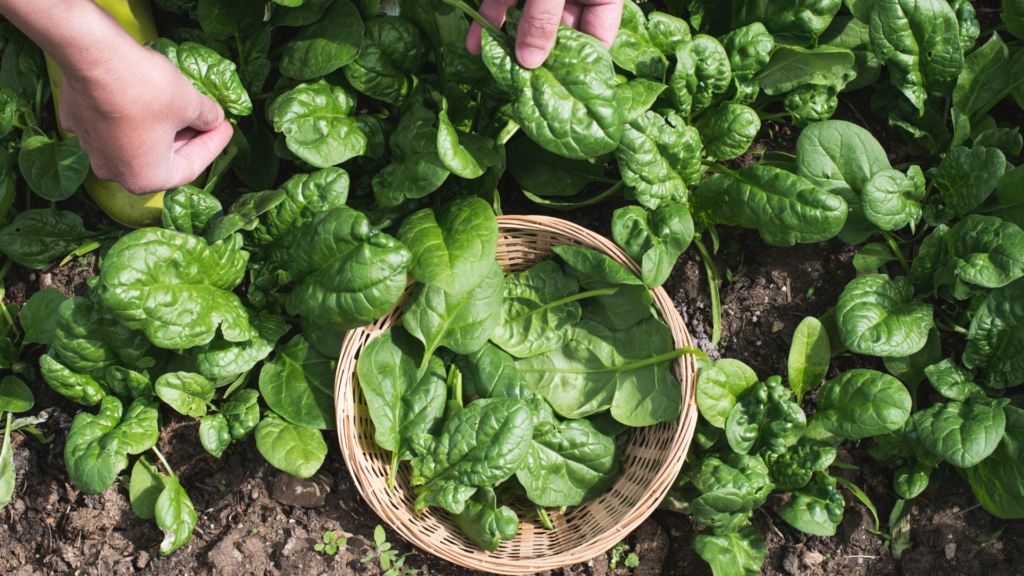Spinach is one of the easiest plants to grow in a garden or in a container. Spinach (spinacia oleracea) is a highly nutrient dense crop grown in spring and fall gardens all over the world, but it originated in Persia. The nutrient density and antioxidants in spinach may help benefit eye health, may prevent cancer, help blood flow and reduce inflammation. Choose the best companion plants for spinach to ensure you get an abundant harvest by incorporating plants into the garden that yield a symbiotic relationship to the spinach plants.

What is Companion Planting?
Companion planting is intercropping different species or plants that provide at least one benefit to the other plant while not negatively interfering with the growth habits of either plant. The plants live in a state of symbiosis.
Symbiotic, or living is a state of symbiosis. is a close relationship between two different organisms or individuals with mutual benefit.
There are plant friends and foes that gardeners refer to as good companions and bad companions. Some great companion plants benefit others by providing the following benefits:
- Natural shade for a smaller crop
- Mulch for a taller crop
- Enrich the soil by providing nutrients
- Serve as a trap crop for insect pests
- May attract beneficial insects
- Add multiple colors and textures to your garden space
- Maximizes space for higher yields

Some points to remember when intercropping two species are the following:
- Is one plant going to shade the other too much
- Do both species have the same nutrient requirements
- Do both species have the same root structure and depth
- Are both species plagued by the same pests or disease
- Will the plants compete for space
What are the Best Companion Plants for Spinach?
Beans and Peas
Beans and peas, part of the legume family, are great companions for spinach as they are nitrogen fixers. Legumes use soil bacteria, which can be enhanced by an inoculant, to take atmospheric nitrogen and fix it into a source in the soil the plant can use for fertility.
Choose pole beans or peas that can be grown on a trellis so they do not compete with the spinach for space. The spinach will benefit the green beans and peas by acting as a living mulch to suppress weeds and keep the soil moist.
Broccoli and Cauliflower
Members of the brassica family, like broccoli and cauliflower, are excellent companions for spinach. Broccoli and cauliflower do not compete for the same nutrients as spinach. Be sure to allow adequate spacing between the large brassica plants so they do no shade out the spinach plants. I plant on double rows and prefer to plant the brassicas on one row and plant the spinach as a neighboring second row.
Swiss Chard
While swiss chard is in the same family as spinach they have different growth habits. The swiss chard are taller plants than spinach and can provide shade to the spinach to keep the plants cooler in warm climates. Both swiss chard and spinach can be harvested as baby greens. If you’re growing swiss chard to full size, allow approximately 6″ between the chard and spinach plants so they do not compete for space.
Tomatoes & Peppers
Tomatoes and peppers, both members of the nightshade family, have different nutrient requirements than spinach. The large plant structure of tomato plants and pepper plants act as an umbrella offering partial shade to the spinach growing below. When planted in the spring, the tomatoes and peppers will have a longer harvest longevity allowing you to efficiently use the same planting row or container for multiple crops. The spinach will bolt when the days are over 80 degrees, but the tomatoes and peppers will still be producing for many weeks.
Strawberries
Strawberries and spinach are good companion plants for each other. They grow about the same height, allowing you to maximize space as you do not have to space these apart like you would with swiss chard. The spinach can be harvested while waiting on the strawberries to ripen. These two companion plants absorb nutrients at two different depths in the soil, so they are not in competition. Spinach produces an biological active toxin known as saponin to protect it from bacterial and fungal pathogens. The strawberries get the added benefit of the saponin in companion planting.
Garlic, Onions, Shallots, Leeks and Chives
These powerful members of the allium family will work double duty as pest control and combatting fungal diseases. Onion, shallots and garlic will deter flea beetles, aphids, spider mites, leaf miners, and carrot rust flies.
Leeks will prevent carrot rust flies in your spinach plot.
Chives are also a great companion plant for spinach as they deter slugs, cabbage worms, aphids and flea beetles.

Marigolds
Marigold flowers assists their spinach companions by deterring some insects and serving as a trap crop to other insects. The fragrant blooms of the marigold attract beneficial insects such as lady bugs, lacewings and parasitic wasps. These beneficial insects will devour any aphids plaguing garden plants in close proximity. The marigolds will also serve as a trap crop for Japanese beetles, spider mites and slugs allowing them to choose the marigolds over the spinach leaves. You may use a neem oil on your marigolds or manually pick off the Japanese beetles or slugs from the marigolds allowing your spinach crop to remain pest free and untreated.
After the marigolds are done for the season, till them into your garden soil to repel and suppress root knot nematodes.
The Worst Companion Plants for Spinach
There are a few vegetable garden plants that are foes of spinach. Potatoes are one of the worst companion plants for spinach. Potatoes attract the flea beetle which will feast on the spinach. For best results, keep fennel, sunflowers, and corn away from spinach. These crops will compete with the spinach for nutrients or provide too much shade or release compounds stunting spinach growth.
Tips for Growing Spinach
Spinach is a cool weather plant so it should be planted in late winter or early spring for an initial crop. A second crop can be planted in the fall as well. The optimal germination temperature for spinach is 45°F to 85°F. Spinach can be direct seeded or planted from transplants.
Spinach requires at least 8 hours of direct sun each day, but can tolerate as little as 5 – 6 hours of direct sun. Plant spinach in fertile soil with good drainage either in ground or in a container.
Soaking spinach seeds overnight will assist germination. Plant spinach seeds 1/2″ deep and keep the soil moist until the seeds germinate. Once germination occurs, reduce the frequency of watering to allow the seedlings to toughen up. Plant transplants in a holes the same size as the planting container in which they were growing in. Fertilize young transplants with a half strength liquid soluble organic fertilizer to give them a strong start. Spinach has moderate fertilizer needs and planting in fertile soil is the best option for healthy plants. Spinach planted in nutrient rich soil often does not require fertilizer.
How to Harvest Spinach
Spinach can be harvested at any time as baby spinach or allow the leaves to grow for larger leaves. If spinach was direct sown you can expect to harvest your first crop within 7 – 10 weeks of seeding. Transplants can yield a harvest much sooner. You can harvest a few leaves from each plant or cut the entire plant at the base.

Continuous harvesting will stimulate new growth. Spinach can be lightly cooked into omelets or soups or eaten fresh in salads or blended into smoothies.



Perfect Timing! I want to put in some spinach as my summer crops are done. Thanks for sharing with us on the Hoemstead Blog Hop.